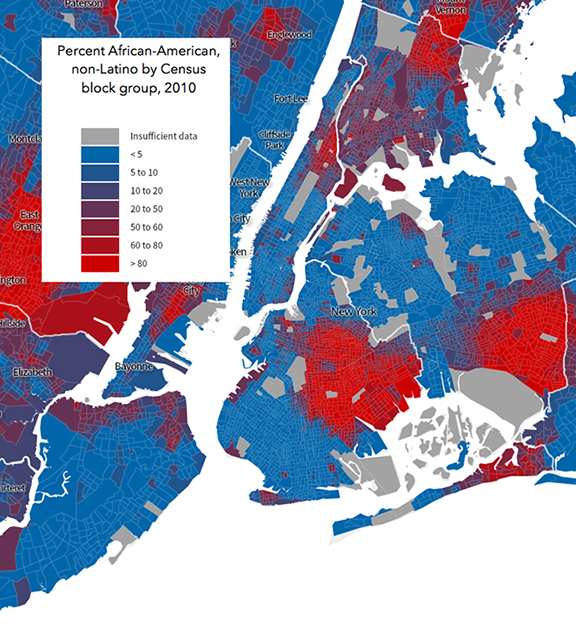They're our neighborhoods, too
Why is so little done to overcome the intense residential segregation that underlies every major social inequity — whether in Baltimore, St. Louis, New York City (one of the most residentially segregated cities in one of the most residentially segregated major metropolitan areas in the country), or elsewhere?
Part of the answer comes from a viewpoint shared, ironically enough, both by people who want to maintain the segregated status quo of White “neighborhoods of opportunity” and by those with a genuine concern for improving conditions within disproportionately African-American or Latino neighborhoods: Focus on building affordable housing where those needing it already live, especially because such people are, supposedly, exclusively committed to remaining in their neighborhoods.
A new study from the Anti-Discrimination Center (ADC), based on field interviews with well over 600 New Yorkers — overwhelmingly African-American; the balance Latino — demonstrates that the idea that everyone is only interested in staying in place is profoundly false.
It’s not just that some people would consider moving a few blocks. 69.2 percent of interviewees said “yes” to considering affordable housing opportunities in a BOROUGH other than the one in which they were currently living. 60.5 percent of interviewees said “yes” to considering affordable housing opportunities in at least one SUBURB outside of New York City.
This willingness existed among all income groups, including those from the many interviewees with household incomes of less than $30,000 a year.
“There simply is no excuse for policies that perpetuate segregation today, whether the policies are restrictive suburban zoning that makes the development of affordable housing a practical impossibility, or city policies that lock in segregated neighborhood demographics by giving preference for some affordable housing units to those who already live in the neighborhood. Such policies are illegal and must be tackled,” said Craig Gurian, ADC’s executive director.
ADC firmly believes that there are three elements of a comprehensive affordable housing approach that is consistent with the need to end segregation. One is the critical importance of creating real security for families so that staying in place in a neighborhood is a genuine option. A second is the equally important component of facilitating real mobility so that people have the genuine chance to move to less segregated neighborhoods of opportunity, whether near or far. The third is to recognize that all of our neighborhoods and communities belong to all of us, regardless of where in a region we may currently live.
A snapshot of residential segregation in New York City for African-Americans (no, this is not derived from 1910 data, but from 2010 data):

